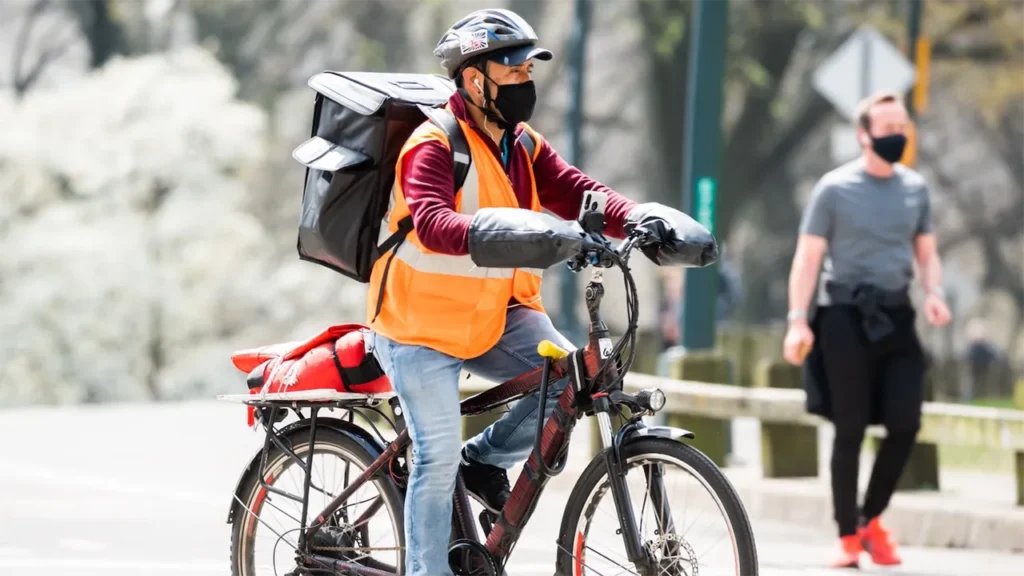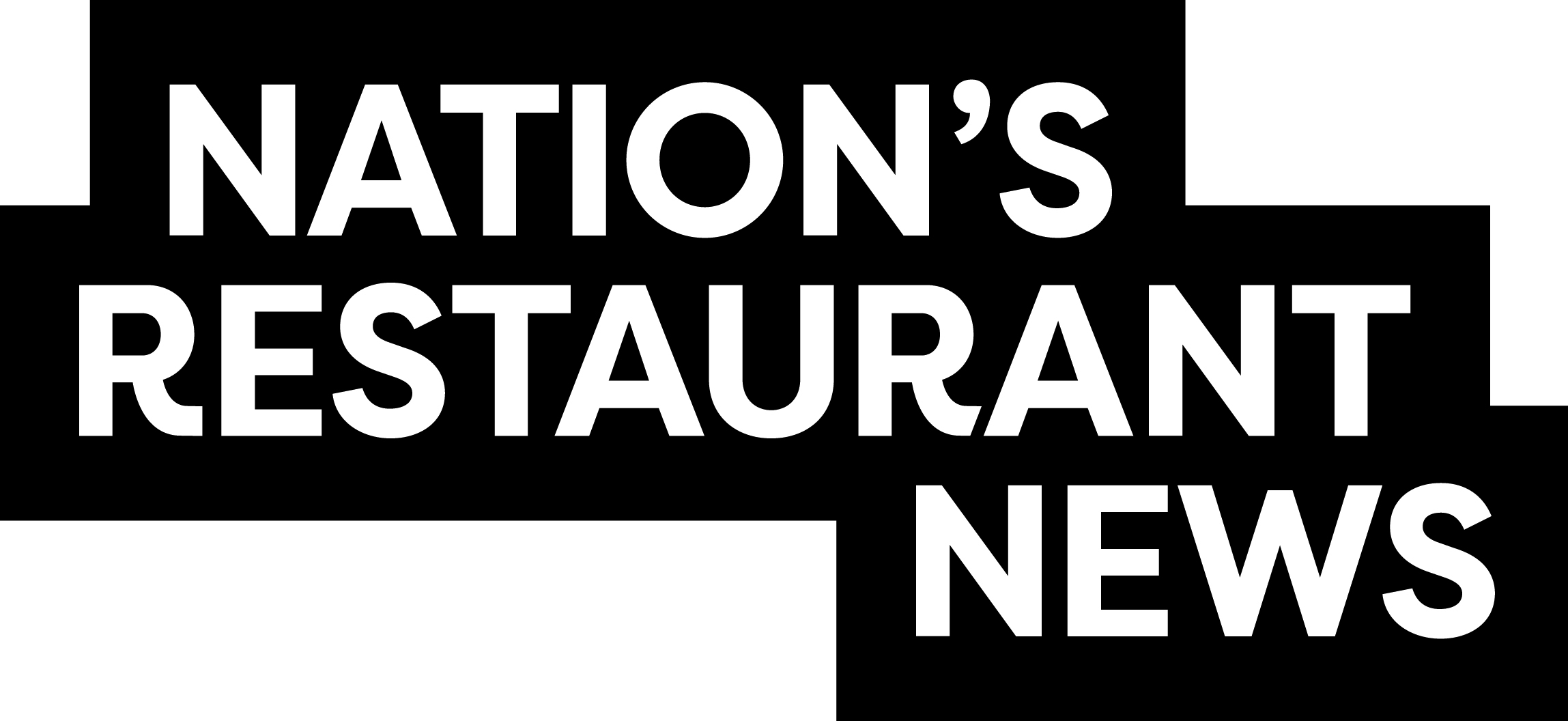Restaurant delivery:
Opportunities, challenges, and future strategies to watch
A peek into the future of one of the most important service channels
13 May 2025
Share this exclusive content from Saladplate

Photo Credit: Noam Galai/Getty Images
I ordered takeout from a wings restaurant on Super Bowl Sunday. Big mistake. The 45-minute wait nearly cost me kickoff. I stood there, surrounded by frantic delivery drivers, flashing hazard lights, and a packed lobby, wondering: Is this really the best we can do?
That chaotic scene was likely driven in part by staff trying to manage both delivery and pick-up on the biggest wing-eating day of the year. The moment perfectly captured America’s love-hate relationship with restaurant delivery.
It’s convenient, drives higher ticket sizes, and can be a serious revenue booster. But let’s be honest, it also disrupts conventional workflows. And if you choose a third-party platform, you hand over control of customer relationships to someone else. Between clogged kitchens, overwhelmed staff, and commissions that eat into profits, delivery can feel less like an opportunity and more like a necessary evil.
Restaurants are stuck in a battle to balance profitability and operational efficiency while trying to reclaim their direct connections with customers. The smartest operators aren’t just accepting the status quo. They’re using technology and strategic delivery models to streamline operations, reduce dependency on third-party platforms, and take back control of their data and margins.
The double-edged sword of restaurant delivery
There’s no denying the money in delivery. This service is no longer just an extra revenue stream — it’s a core part of the business model. In fact, 70% of consumers ordered delivery in the past month, matching the number who picked up takeout and slightly edging out the 68% who dined in at a restaurant.
But here’s the catch: While delivery increases revenue, it also disrupts operations. Many operators have watched their staff juggle delivery and dine-in orders. Handling packaging and driver coordination stretches workers thin. Orders pile up, causing delays that frustrate both in-house guests and delivery customers. On top of that, syncing multiple delivery apps with the restaurant’s system is often a tech nightmare.
Using third-party apps delivery service providers (DSPs) like Uber Eats, DoorDash, and Grubhub can help manage logistics, but they come with drawbacks. Those platforms take 20-30% commissions on every order while controlling customer data, pricing and even the restaurant’s brand reputation. When things go wrong — late orders, missing items — it’s the restaurant that takes the hit with bad reviews and third-party platform ranking degradation. DSPs will reduce the restaurant’s visibility on the portals and/or temporarily suspend orders even if the problem was out of their hands.
That loss of control is a major pain point, leaving restaurants scrambling to optimize operations and regain ownership of their customer relationships.
How restaurants can reclaim control
The good news? Operators aren’t powerless. More and more restaurants are implementing integrated technology solutions to bring order to the chaos, reduce reliance on third-party platforms, and rebuild direct customer connections. Let’s take a closer look:
1. Smarter tech = more efficient, less disruptive delivery
The key to making delivery work without wrecking in-store operations is smart technology and automation. According to the Future of Automation Report, 54% of restaurant owners plan to increase tech spending in 2024, with 43% automating order tracking and 38% already seeing increased profits from automation.
Advanced POS integrations allow orders to flow seamlessly from delivery apps into kitchen systems, reducing errors and improving speed. AI-driven demand forecasting helps restaurants anticipate rush periods and adjust staffing accordingly. Some operators are using real-time data tracking to optimize prep times and eliminate bottlenecks, ensuring delivery orders don’t derail dine-in service. And to reduce driver congestion, many are setting up dedicated pickup stations to keep things moving smoothly.
2. First-party delivery: Own the relationship, keep the profits
One of the biggest shifts in the industry is the move toward first-party delivery, where customers order directly from a restaurant’s website or app instead of through a third-party marketplace. The benefits are huge: higher margins, full access to customer data, and total control over the brand experience.
With first-party delivery, restaurants can eliminate hefty commission fees, personalize marketing efforts using customer data, and offer a more consistent and reliable delivery experience. Developing a first-party delivery ecosystem requires an upfront investment in technology, logistics, and marketing, but the long-term payoff is significant. Some brands are taking a hybrid approach — handling ordering in-house while outsourcing the actual delivery to third-party services — allowing them to retain customer data while still using third-party drivers.
3. Make third-party marketplaces work for you
While third-party platforms are a necessary part of the ecosystem, restaurants don’t have to let them dictate the terms. Many are adjusting their pricing strategy by charging more for delivery orders to offset commission fees while keeping in-house menu prices competitive. Others are rolling out exclusive deals and loyalty programs for customers who order directly, incentivizing repeat business through first-party channels.
Another emerging trend is subscription-based loyalty models, where customers pay a monthly or annual fee for free or discounted delivery. This approach encourages customers to skip third-party apps in favor of direct ordering, helping restaurants build long-term customer relationships while locking in predictable revenue.
The future of restaurant delivery
As the industry evolves, operators who stay ahead of the curve will turn delivery from a headache into a competitive advantage. Here’s what’s coming next:
1. AI-Powered delivery optimization: AI is transforming restaurant delivery by powering systems that can predict order volume, helping restaurants prepare for peak hours while reducing food waste. Dynamic pricing models (similar to surge pricing for rideshares) could adjust delivery fees based on demand. AI chatbots are also on the rise, assisting customers with order modifications and troubleshooting without overwhelming restaurant staff.
2. Hybrid delivery models: The smartest restaurants won’t choose between first-party and third-party delivery — they’ll do both. Third-party platforms bring in new customers, while first-party channels build loyalty and boost profits. Brands can convert more customers to first-party ordering by offering exclusive menu items only through their app, lower delivery fees for direct orders and personalized loyalty perks to encourage repeat business.
3. Fully integrated, frictionless technology: The future of delivery is seamless. POS systems, kitchen management software and third-party platforms are becoming more integrated, reducing inefficiencies and making it easier for restaurants to manage delivery alongside in-house dining. More restaurants will invest in centralized platforms that track performance across all channels, allowing them to adjust pricing, staffing, and marketing strategies in real time.
4. The rise of virtual and delivery-only brands: Ghost kitchens and virtual brands are reshaping the restaurant landscape. With lower overhead costs and the ability to test new concepts without opening physical locations, more operators will launch delivery-only brands to expand their reach. Some will leverage third-party platforms to tap into existing delivery infrastructure, while others will build their own direct-to-consumer models to maximize profitability.
The bottom line: Take back control
Restaurant delivery isn’t going anywhere, but the way restaurants approach it is changing fast. Operators who embrace technology, optimize operations and reclaim customer relationships will come out ahead. Now is the time to make delivery work for your business, not against it. So ask yourself: Are you running delivery, or is delivery running you?

Source: Nation’s Restaurant News



